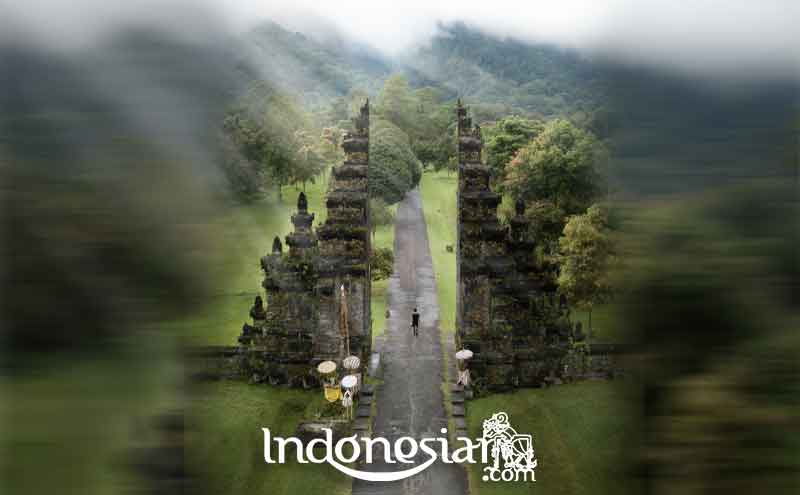Almost everyone knows that the majority of Balinese people or people are Hindus. As is known, the holy place of Hinduism is a temple and almost all Hindus have a temple in their yard including businesses, schools and offices, so it is not surprising that Bali is also known as the island of Seribu Pura. Bali itself is known as a world tourist destination worldwide.
The history of Hindu development until now has developed quite dynamically and universally without reducing the meaning of a belief in God. Hindus in Bali live in harmony with other religions and are very tolerant.
History of the Entry of Hinduism to Bali
The religion and belief of Hindu teachings first came from India, in the 15th century BC, they entered Indonesia through South China in two different directions, namely from the West, entering through Indo China, Malaya, Siam and spreading in Kalimantan, Sumatra and Java, while from the North via Japan, the Philippines, Taiwan and then spread in Eastern Sulawesi and Irian.
Then the history or the origin of the entry of Hinduism to Bali, is closely related to the arrival of the Majapahit people who already have Hinduism and understanding. Balinese society prior to the arrival of the Majapahit people consisted of various faiths and were divided into various sects, long before the arrival of Hinduism from Java or Hindu Majapahit to Bali, the history of the entry and development of Hinduism in Bali after the prehistoric era of Bali where people did not know writing, along with over time the influence of Hinduism began to enter at the time of the arrival of Majapahit under the leadership of Gajah Mada.
Gajah Mada was a governor from the Majapahit kingdom who had Hindu-Buddhist understanding. The history and development of Hinduism in Bali is inseparable from Hinduism in Java and India and has historically been mixed with Buddhism. This resulted in Hinduism in Bali in practice being different from Hinduism in India. Hinduism that develops in Bali follows local culture and traditions, so that in daily implementation, or in the implementation of religious and traditional ceremonies, it may be different when compared to the contents of the Hindu holy book, namely the Veda.
Also found was an inscription containing the history of Hinduism in Bali, namely in Gianyar, precisely in the village of Pejeng which used Sanskrit. In this case, that the history and development of Hinduism in Bali is thought to have been influenced by Hinduism from Central Java and East Java which is thought to have entered Bali before the 8th century AD. The inscription is inscribed with the word “sivas siddhanata”. Thus, the 8th century Siwa Siddhanta has developed in Bali. The development of religious teachings adhered to by the king and the people certainly went through a long process, so that the Hindu Siddhanta sect had slowly entered before the 2nd to 8th centuries AD.
In Bali itself, during the ancient Mataram kingdom (between 600-1000 AD) there was already a kingdom centered in Bedulu with a descendant of Warmadewa king, there is a possibility that this kingdom at that time was influenced by Hindu traders or perhaps also from the influence of the Mataram kingdom. Then at the end of the 10th century Bali was ruled by a king named Marakata who was the younger brother of Airlangga (Erlangga), both of whom were the sons of Udayana, who was the king of the Bedulu Kingdom, Erlangga himself ruled on the island of Java.
The history of the occupation of Bali was carried out by the Singasari kingdom, namely Kartanegara, Bali was conquered in 1284, but it did not last long because in 1383 the Majapahit kingdom sent its troops led by the governor of Gajah Mada to attack Bali. Singasari was conquered and the kingdom was taken over by Majapahit, and the governor of Gajah Mada brought aristocrats from Majapahit to rule Bali, and founded a kingdom with its capital named Samprangan, then the kingdom was moved to Klungkung with the king who had the title Dewa Agung. Come on, get other interesting information only at Indonesiar.com.
Source : balitoursclub
































